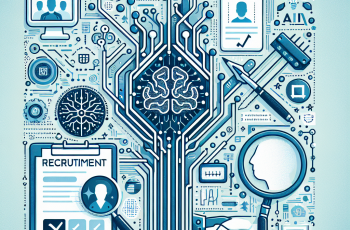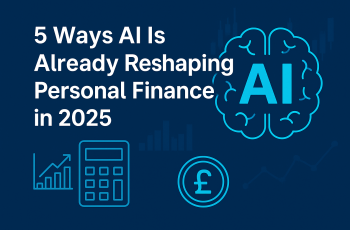What are the Latest Updates on How AI Companies like Claude, OpenAI, and Perplexity are Integrating with Robotics Companies like Figure and Tesla Optimus?
Estimated Reading Time: 5 minutes
- Evolving Automation: Companies need to assess workflows for AI-driven enhancements.
- Embrace Collaboration: Enhancing human-robot collaboration is critical for efficiency.
- Focus on Training: Investing in employee training on AI systems is essential.
- Adaptable Business Models: Flexibility in business models is key to market responsiveness.
- Proactive Innovation: Staying updated on technological advancements fosters a culture of innovation.
Table of Contents
- The Growing Landscape of AI Robotics
- AI Integration in Robotics: A New Era
- The Rise of Autonomous Agents
- Collaborations and Industry Examples
- Practical Applications of AI-Powered Robotics
- Key Takeaways for HR Professionals and Business Leaders
- Conclusion: The Path Ahead
The Growing Landscape of AI Robotics
The AI robotics sector is undergoing explosive growth, with a projected global market value of $64.35 billion by the end of the decade, demonstrating a compound annual growth rate (CAGR) of 23.37% (Standard Bots). This rapid expansion reflects the increasing recognition of automation’s potential to transform workplaces across sectors, from manufacturing to healthcare.
In this highly competitive environment, major players like Standard Bots and ABB are leveraging advanced AI, including models on par with GPT-4, to enhance their robotics capabilities. This integration fosters smarter automation and facilitates safer collaboration between humans and robots, reshaping traditional workflows.
AI Integration in Robotics: A New Era
One of the most notable advancements is the incorporation of advanced AI systems in state-of-the-art robots, such as Standard Bots’ RO1. These robots can learn and adapt from continual usage, leading to improved precision and increased productivity in industrial environments. The implication is clear: robots are no longer limited to performing repetitive tasks; they are evolving into intelligent systems capable of collaborative workflows and real-time adaptability (Standard Bots).
This progression signifies a transformative moment in how businesses approach automation. AI agents are now taking on complex enterprise workflows, often requiring decision-making capabilities previously reserved for human workers. The AI 50 list for 2025 highlights this significant shift, moving from simple chatbots to advanced agents that can manage entire business processes, including physical tasks around manufacturing, logistics, and healthcare (Sequoia Capital).
The Rise of Autonomous Agents
The evolution of autonomous agents showcases an exciting leap in robotics capabilities. By deploying reasoning models, advanced robots can now make independent decisions, troubleshoot issues, and optimize their workflows dynamically (Sequoia Capital). This blend of AI capabilities makes these robotic systems more reliable and effective partners in the workplace, reducing the workload and increasing efficiency for human employees.
For HR professionals and business leaders, this means a new operational paradigm. Embracing such AI-driven robotics can streamline processes, enhance productivity, and ultimately contribute to a more innovative workplace culture.
Collaborations and Industry Examples
While comprehensive partnerships between AI companies like Claude, OpenAI, and Perplexity and robotics firms like Figure or Tesla Optimus are still in the nascent stages, the underlying market conditions are ripe for thriving integrations. Industry trend analysts emphasize that cutting-edge AI models are routinely licensed and incorporated into various robotics platforms, paving the way for more sophisticated systems (Standard Bots).
For instance, Figure is known for its humanoid robots, which are now demonstrating enhanced capabilities, thanks to AI. These robots showcase advanced vision, the ability to manipulate objects contextually, and learning from demonstrations. Tesla Optimus, similarly, is becoming a formidable player with robots that incorporate context-aware learning and natural language interfaces, expanding their operational reach from industrial settings to personal assistance.
Practical Applications of AI-Powered Robotics
The tangible applications of AI-integrated robotics span multiple fields:
- Manufacturing: Robots are involved in assembly, quality checking, and logistics management—enabling a precise and efficient production environment.
- Healthcare: AI-powered robots assist in surgical procedures and enhance patient interactions, improving outcomes and operational efficiencies.
- Retail: From inventory management to customer service bots, AI-integrated robots streamline operations and enhance the customer experience.
- Office and Home Environments: Robots function as personal assistants, engage in cleaning tasks, and provide organizational help, enhancing day-to-day life.
These applications underline the vast potential of AI and robotics integration, proving beneficial to both employee productivity and operational efficiency.
| Robotics Company | AI Integration Highlights | Example Use Cases |
|---|---|---|
| Standard Bots (RO1) | GPT-4-level AI, adaptive workflows | Manufacturing, logistics |
| Figure | Advanced vision & manipulation (AI-powered) | Humanoid robotics (R&D) |
| Tesla Optimus | Context-aware learning, language interface | Industrial, personal robotics |
| ABB, Simbe, etc. | AI for inventory, operations, quality checks | Retail, automation |
Key Takeaways for HR Professionals and Business Leaders
- Evolving Automation: The convergence of AI and robotics signifies a major shift in automation practices. Companies should assess their current workflows to identify opportunities for AI-driven enhancement.
- Embrace Collaboration: AI-driven agents are changing the dynamics of human-robot collaboration. Embracing these changes will be critical for maximizing efficiency.
- Focus on Training: As these technologies advance, so too should the skill sets of your workforce. Investing in training programs that educate employees on working alongside AI-driven systems will be essential for a future-ready team.
- Adaptable Business Models: Explore how AI can influence your business model. The flexibility offered by AI integrations can allow for quicker pivots and adjustments in response to market demands.
- Proactive Innovation: Stay informed about technological advancements to help develop a culture of innovation within your organization. Being agile and forward-thinking will position your company as a leader in your industry.
Conclusion: The Path Ahead
The unfolding integration of AI and robotics is more than just technological innovation; it represents a fundamental shift in how industries operate. By 2025, AI-powered robotics are expected to transition from mere concepts to operational tools that redefine workflows across sectors. While partnerships showcasing direct integration between companies like Claude, OpenAI, and robotics leaders may not be widely reported yet, the groundwork for this technological evolution is firmly laid, with innovations presenting new opportunities and challenges.
As we look toward a future characterized by intelligent, autonomous systems, businesses must be prepared for the vast possibilities these technologies bring. For those interested in exploring how AI can transform their operations, our AI consulting services and expertise in workflows like n8n provide actionable insights and solutions tailored to your unique needs.
Contact us today to learn how we can assist you in navigating this exciting frontier and optimizing your business processes through AI integration. Let’s build a brighter, technologically empowered future together!
FAQ
What is AI robotics?
AI robotics is the integration of artificial intelligence with robotic systems to enhance their functionality and adaptability.
How can businesses benefit from AI and robotics integration?
Businesses can streamline operations, reduce costs, enhance productivity, and improve decision-making processes through AI and robotics integration.
What industries are most affected by AI robotics?
AI robotics impacts various sectors, including manufacturing, healthcare, retail, and logistics, by automating routine tasks and improving processes.
What future developments can we expect in AI robotics?
Future developments may include greater autonomy, improved human-robot collaboration, and advancements in machine learning that allow robots to learn from their environments.
How should companies prepare for AI-driven changes?
Companies should invest in training for employees, assess their workflows for automation opportunities, and adopt flexible business strategies to adapt to rapid technological changes.

